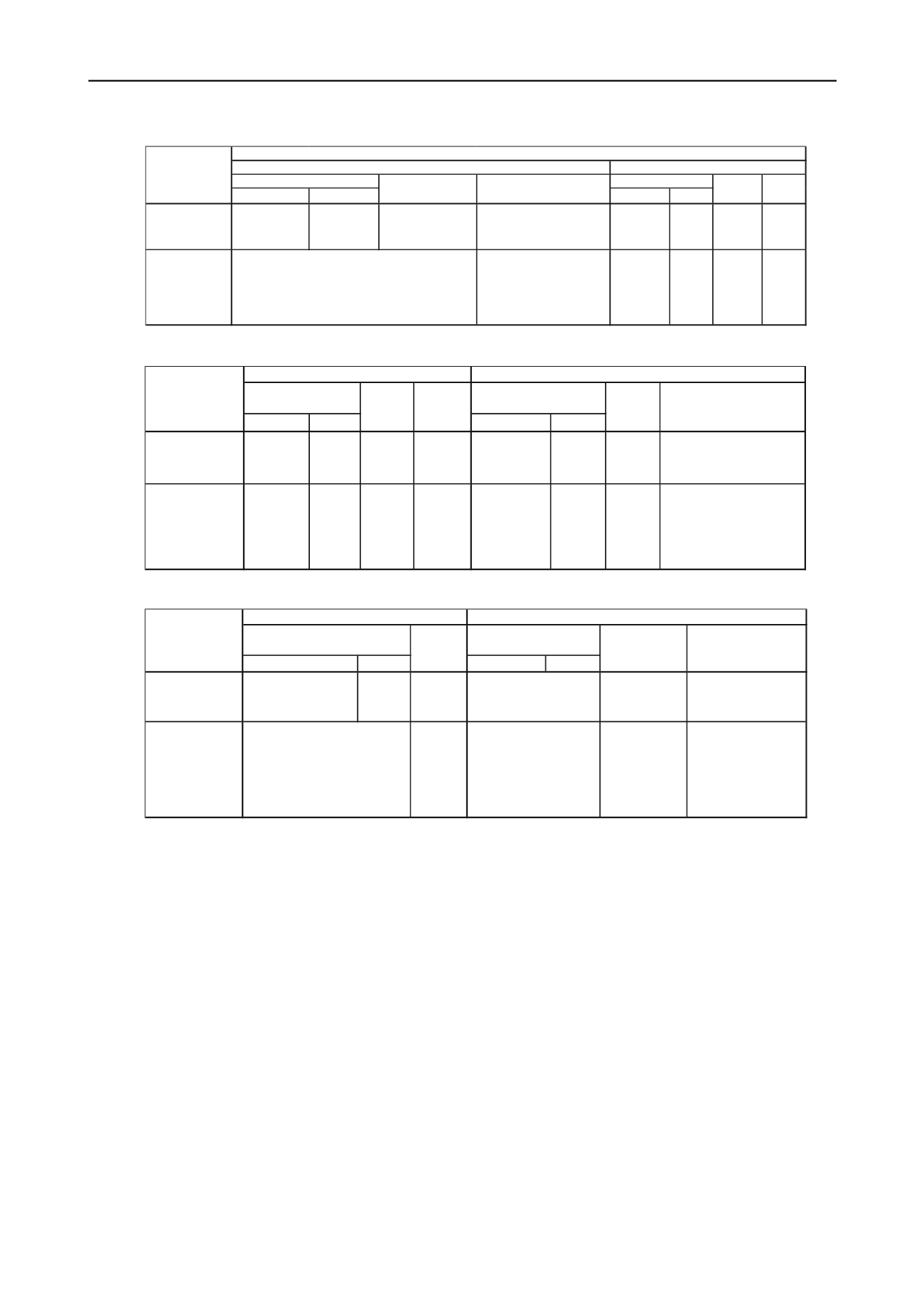
1821
Technical Committee 205 /
Comité technique 205
Table 1. Partial safety factors – ASIRI ULS-GEO
Failure
Sliding
Failure Sliding
Partial safety factor
for resistance
R;v
x
R;d
= 1,4 x 1,2
= 1,68
R;h
x
R;d
= 1,1 x 1,0
= 1,1
{
'
=
c'
} x
R;d
= 1,25 x (1,1 bis 1,2)
= 1,38 bis 1,5
{
b
=
s
}
x
R;d1
x
R;d2
= 1,1 x 1,15 x 1,1
= 1,39
/
/
/
Remark
like piles
under the
neutral plane
empirical values
(pressuremeter method)
no
stability
check
no
stability
check
no
stability
check
st
ULS‐GEO
(BS‐P)
ASIRI (France)
load reduction due to RI
(Slope only drained here
model factor for reinforced
soils depending on the
sensitivity towards deformations)
Slope
Isolated footing
Domain 2
Domain 1
Slope
RI
Isolated footing
/
no
ability
check
RI
Failure Sliding
Base failure Sliding
Partial safety factor
for resistance
R,v
= 1,4
R,h
= 1,1
'
=
c'
= 1,25
b
=
s
= 1,4
R;v
x
R;d
= 1,4 x 1,2
= 1,68
R;h
x
R;d
= 1,1 x 1,0
= 1,1
'
=
c'
= 1,25
{
b
=
s
}
x
R;d1
x
R
= 1,1 x 1,15 x 1,1
= 1,39
Remark
only
drained
here
with
empirical
values
with
pressuremeter
method
only
drained
here
with empirical valu
(pressuremeter meth
ULS‐GEO
(BS‐P)
Isolated footing
Slope
Eurocode 7 Germany
Eurocode 7 France
Piles
Isolated footing
Slope
Piles
;d2
es
od)
Sliding
Failure
Sliding
Partial safety factor
for resistance
R,h
= 1,1
/
'
x
pV
= 1,25 x 1,15
= 1,43
sp
= 1,25 bis 1,4
Remark
/
only drained
here
pV
against
chain reaction
of columns
Assumption:
total load
in the column
depending on nu
of load tests
(in execution pha
ULS‐GEO
(BS‐P)
as global system
CSV‐Guideline (Germany)
/
Slope
Isolated footing
Columns
CPRF‐Guideline (Germany)
not taken into account
Slope
Combined pile‐raft foundation
Failure
R,v
= 1,4
s;
mber
se)
Table 2. Partial safety factors – Eurocode ULS-GEO
Table 3. Partial safety factors – Recommendations ULS-GEO
According to the French application standards of Eurocode
7, safety checks for the resistance have to be carried out in the
SLS as well. This has been adopted in ASIRI for the domain 1.
Therefore a so-called "pile creep load" has been defined in the
French standards as 70% (for displacement piles) of the total
resistance as a reference in the SLS. The safety against failure
of beraing capacity of single footings also is increased in
comparison with the ULS. In the domain 2, only the
compatibility of the displacements has to be investigated. In the
German application standards of the Eurocode 7, only the limits
of deformation have to be controlled in the SLS.
4.2 Internal structural capacity (STR)
The safety factors for the maximum compression in the section
of the rigid inclusions in the ULS and SLS are similar to those
for piles in Eurocode 7 (with reference to Eurocode 2 for the
concrete). The safety factor for the resistance in ASIRI is up to
approximately 2 to 11 depending on the limit state, the
execution type, the slenderness of the column and the quality
controls. In order to avoid very small column diameters, the
mean compression stress in the section is in all cases limited to
7 MPa in the ULS (domain 1). Adapted values have to be
considered for domain 2 (SLS).
Although the rigid inclusions are not used as tension piles,
tension stresses can develop in the section resulting from
bending moments. In the domain 1, the columns have to be
reinforced in the same way as piles according to Eurocode 2 as
soon as tension stresses appear in the section. On the other
hand, in the domain 2 tensile stresses up to the characteristic
value of the tensile strength of the concrete are allowed. If this
value is exceeded, the columns have to be reinforced as well.
The internal resistance can be particularly endangered in the
case of unreinforced columns with very small diameter (Wehr
& Sondermann 2011). For this reason, no shear stresses are
allowed in ASIRI for unreinforced columns with a diameter
smaller than 30 cm (cp. 40 cm for conventional piles). Buckling
effects have to be analysed also for these small diameters and
for very soft soils (pressuremeter modulus EM smaller than 3
MPa). The minimum allowed diameter in ASIRI for
unreinforced columns is 25 cm.
In the CPRF-guideline (Hanisch et al. 2002) the internal
resistance has to be checked in the same way as for
conventional pile foundations.
According to the CSV-guideline (DGGT 2002), a safety
factor of 2 has to be considered for the mean compression, in
comparison with 2 up to 6 for the maximum compression stress
in the ULS and 7 MPa for the mean compression stress in
ASIRI. According to this guideline, the buckling has to be
checked only in soft layers with an undrained cohesion smaller
than 10 kPa. This is not in accordance with the present state of
the art for slender piles: buckling effects can already appear for


